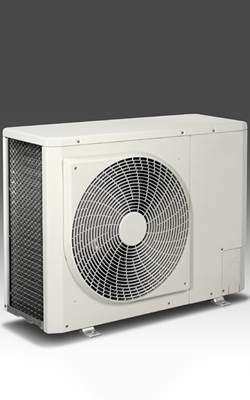The absolute vacuum gauge has seven display units of microns, psi, inHg, mBar, Pa, Torr, and mTorr can be transferred. The portable vacuum gauge features a large LCD backlight display, ensuring easy readability even in dimly lit or challenging working conditions. Its compact and handheld design allows for effortless portability and accurately monitors and troubleshoots pressure in various systems, ensuring optimal performance.

The digital vacuum gauge is designed with a steel hook
- The thermistor vacuum gauge is equipped with a robust steel hook, providing a secure and reliable method for hanging the gauge during use.
- The hook ensures the gauge is securely attached, minimizing the risk of dropping or damaging the device, thereby extending its lifespan and maintaining its accuracy.
- The protruding feet on the back are equipped with a strong and firm magnet that can stick to various magnetic metals.
- The inclusion of the steel hook demonstrates a practical design approach, catering to the needs of professionals who require both precision and convenience in their measurement tools.

High-quality metal spiral interface
- The thermistor digital vacuum gauge is equipped with high-quality metal connectors, ensuring a secure and reliable connection to various systems and components.
- The metal connectors are designed to withstand harsh conditions and frequent use, providing long-lasting durability and performance.
- Metal connectors offer better sealing properties compared to plastic connectors, ensuring a tight and leak-free connection, which is crucial for accurate vacuum measurements.
Dimension

Applications
SISCO vacuum gauges are used to measure and monitor pressure in vacuum systems and are essential for maintaining accurate vacuum conditions. It is used in the automotive industry, HVAC, industrial, medical device manufacturing and sterilization, food packaging for extended shelf life, pharmaceutical production, aerospace for high altitude simulation, and the chemical and petroleum industries for processes such as distillation and purification.

HVAC

Industry

Food Packaging

Automotive
| Model | SISCO-VG-605 | ||
| Specification | |||
| Probe Type | Thermistor | ||
| Connector Type | Standard 1/4 NPT plug-in | ||
| Range | 0-12000 microns (0-1600 pascals) | ||
| Measurement Unit | microns, psi, inHg, mBar, Pa, Torr, mTorr | ||
| Overload Pressure | 500 psi | ||
| Operating Temperature | 0-40℃/ 32-104℉ | ||
| Power Supply | 9V alkaline battery (not included) | ||
| Weight | 250g | ||
| Dimensions | 174*76*35mm | ||
| Electrical specifications | |||
| Measurement | Range | Resolution | Accuracy |
| microns | 0-12000 microns | 0-150: 1 micron | ±10% rdg ± 10 dgt (50-1000 microns) |
| 151-500: 5 microns | |||
| 401-500: 10 microns | |||
| 501-1000: 20 mocrons | |||
| 1001-2000: 50 microns | |||
| 2001-12000: 500 microns | |||
Q1: What is a vacuum gauge?
A1: A vacuum gauge is an instrument used to measure the pressure in a vacuum system, indicating how much air or gas is present within a closed environment. These gauges are essential in applications where precise control of pressure is required.
Q2: How does a vacuum gauge work?
A2: A vacuum gauge works by measuring the pressure exerted by the gas or air molecules within a vacuum system. Different types of vacuum gauges (such as mechanical, thermal conductivity, and ionization gauges) use various principles to detect and measure this pressure.
Q3: Can I use a vacuum gauge with any type of gas?
A3: Not all vacuum gauges are compatible with all types of gases. Some gauges are sensitive to specific gases, which can affect their accuracy and performance. Always check the manufacturer’s specifications for gas compatibility.
Tips: How does a thermistor digital vacuum gauge work?
A thermistor vacuum gauge measures vacuum pressure by utilizing a thermistor, a type of temperature-sensitive resistor, as its sensing element. Here’s how it works:
- Thermistor Heating: The thermistor is electrically heated when the gauge is in operation.
- Heat Loss Variation: The amount of heat lost from the thermistor to its surroundings depends on the surrounding gas pressure.
- Resistance Change: As the vacuum pressure changes, the rate of heat loss alters the thermistor's temperature, which in turn changes its electrical resistance.
- Pressure Calculation: The digital gauge measures this resistance change and converts it into a pressure reading, which is displayed on the gauge.
This method provides precise and reliable vacuum measurements, particularly useful in applications that require monitoring low to medium vacuum levels.
Thank you for buying industrial test and measurement equipment on SISCO.com, all products sold by SISCO and the partner cover a 12 months warranty, effective from the date of receiving the products.
What is covered?
SISCO is responsible for providing free spare parts, and free technical support to assist the customer to repair the defective products until the problem is solved.
What is not covered?
- Product purchased from anyone other than a SISCO store or a SISCO authorized reseller.
- Expendable parts.
- Routine cleaning or normal cosmetic and mechanical wear.
- Damage from misuse, abuse or neglect.
- Damage from use of parts other than SISCO approved.
- Damage from use outside the product’s usage or storage parameters.
- Damage from use of parts not sold by SISCO.
- Damage from modification or incorporation into other products.
- Damage from repair or replacement of warranted parts by a service provider other than a SISCO authorized service provider.
- Damage caused by the application environment not meeting the product usage requirements and the failure to perform preventive maintenance.

